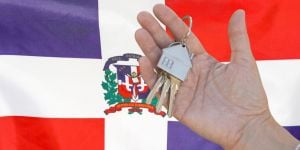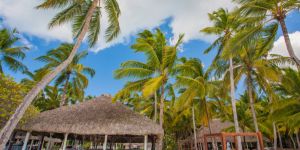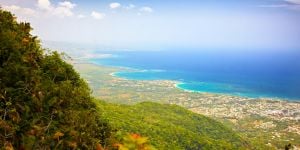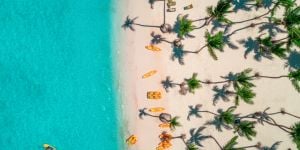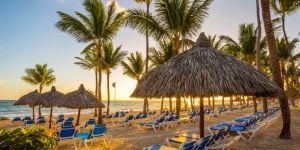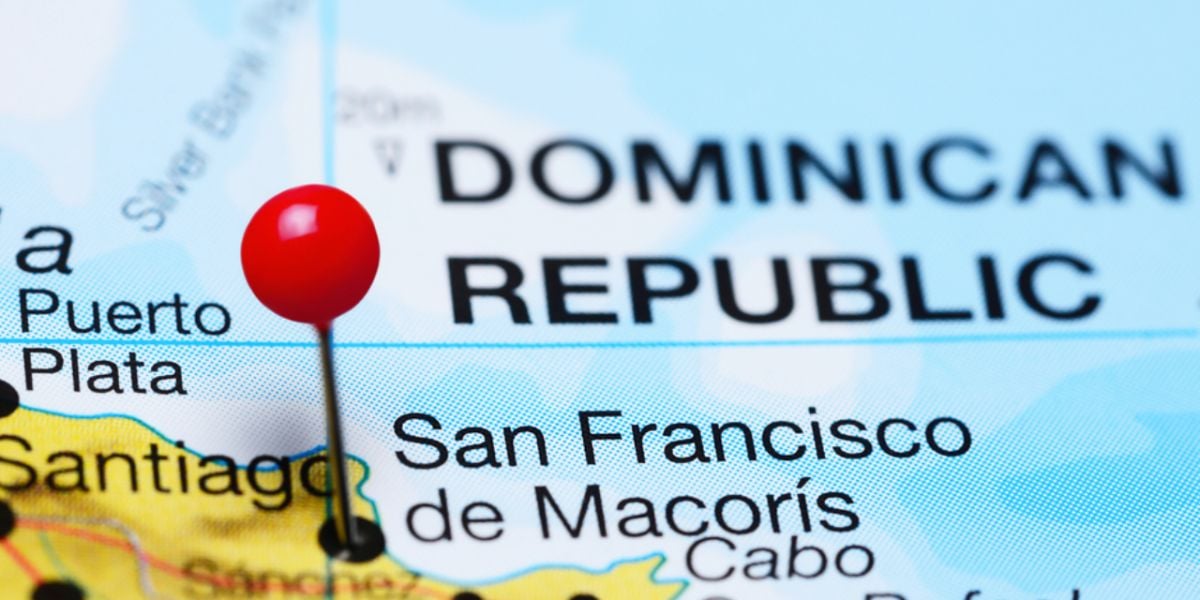
San Francisco de Macorís is one of the major and most popular Dominican cities. Stretching over some 759.5 km², it is located in front of the Loma Quita Espuela, is part of the country's Northern Cordillera, and is the Duarte province's capital city. San Francisco de Macorís is, above all, an agricultural city. Over the years, tourism has developed into an economic pillar. Hence, finding accommodation should not be too difficult.
Be sure to inquire about its different neighborhoods and the types of accommodation available there before choosing the one that best suits your needs.
As a consequence of recent developments around the country, the city is able to attract even more international tourists, resulting in significant growth in tourist numbers. People who visit the town are generally pleased because of its beautiful nature and the range of activities provided by the locals. This is a little village that has become a tourist destination for anyone who wishes to explore it.
More information about the Duarte region
The province of Duarte is located in the eastern part of the La Vega Real o Cibao Valley, also known as the Yuna Valley. Apart from San Francisco de Macorís, it also includes other municipalities, namely Villa Riva, Pimentel, Arenoso, Castillo, Las Guaranas, and Eugenio María de Hostos.
Agriculture and livestock are the main economic activities in most of these areas. These include the cultivation of fruits, cocoa, coffee, snuff, bananas, and rice. Note that fields are surrounded by Camu, del Jaya, Cuba, and Cenoví rivers.
Over the years, tourism has become one of the region's most significant activities. Moreover, ecotourism is gradually growing around the Loma Quita Espuela Reserva Científica. San Francisco de Macorís, for its part, displays a real economic dynamism through its industries and continuously improving agriculture.
Finding accommodation in San Francisco de Macorís
Finding accommodation in San Francisco de Macorís from abroad, although a few websites do advertise current housing offers. You can also try your luck by networking and specifying your criteria, along with your budget.
As is the case in most Dominican cities, the best way to find accommodation in San Francisco de Macorís is to be on the spot. You can then seek the assistance of a professional real estate agency that will help you on every step, especially if you do not have a good command of Spanish.
We recommend that you budget $400.00 for an ordinary apartment in San Francisco de Macorís. Undoubtedly, some would attempt to get you to pay extra money since you're a foreigner, but spending more than $600.00 for an apartment in San Francisco de Macorís is a complete rip-off.
Finally, word-of-mouth may also help if you have friends and contacts in the region.
Nightlife in San Francisco de Macorís
The nightlife in this city is more what you'd anticipate from a little town.
Roof Club
Supposedly, one of the most famous and beloved nightclubs is Roof Club. It is also pretty high-end, and it means pretty high prices, chic ladies, and bottle service expected – especially if you are a foreigner.
Skuer Bar
Some have recommended this bar. It's a rather fancy society's elite club, so be prepared to pay higher prices than in any other ordinary club.
Although this is a trendy area nowadays, nightlife suggestions are nearly meaningless in San Francisco de Macorís since hotspots shift so frequently. What used to be hip the other night could be empty the following weekend.
Transport in San Francisco de Macorís and the area
You can get there from Santo Domingo, for example, via Caribe Tours for about 28 USD one way. It should not take much longer than a little bit under two hours, depending on traffic, of course.
The lack of organization of the system in general with the location of urban (moto conchos) and interurban stops lack of information from users, deterioration of the infrastructure roads, and the invasion of public space by interurban routes, establishing themselves in areas destined for public parking, congesting the main roads are all contributing factors to the problem of urban and interurban public transportation in San Francisco de Macorís.
Things to do in and around San Francisco de Macorís
As tourism has grown to be one of the most productive pillars of the Dominican economy, ecotourism and community tourism have grown in popularity among those seeking the thrill of exploring new spots, connecting with the environment, and preserving memorable moments of adventure while ensuring environmental sustainability and benefiting community members.
Several of these sights can be found in the center of the Northeast territory, notably in the Duarte district, which is between the provinces of the Cordillera Septentrional to the North and the Cibao Basin southward. San Francisco de Macorís, the province's principal municipality, contains natural treasures for people who are interested in ecotourism.
There are plenty of exciting trips you can do on your days off around San Francisco de Macorís, but we found that there are five of them that you simply cannot miss! Additionally, it helps to improve the standard of living for its residents.
Visit el “Sendero del cacao”
San Francisco de Macorís is renowned as the chocolate city since it produces 63.5 percent of the organic cocoa shipped from the Dominican Republic to worldwide markets.
The Sendero del Cacao, as the locals call it, is 6.5 kilometers away from San Francisco de Macorís and has hosted over 50,000 domestic and international travelers ever since its inauguration about 14 years ago. The Rizek Group, one of the main producing and exporting enterprises in this area, used the 28,500 saplings planted at its La Esmeralda farm to reconstruct a tour for the public's entertainment that walks guests through the organic chocolate manufacturing phase.
The excursion costs Dominicans RD 1,465 per person and tourists USD 25. Lunch and a sampling of cocoa-derived delicacies are included in this price.
Corredor ecológico
Some woodlands receive guests with covered picnic seats at the entry of San Francisco de Macorís in the town of Mirabel. Upon the first glimpse, the Rivera del Jaya ecological corridor may appear to be a park. Still, the Provincial Directorate of Environment is an initiative to attempt to rescue 120 hectares from abandonment and prepare this land for the cultivation of exotic plants, intending to implement those as a botanical garden.
The 12-year-old project comprises 866 plant species from the Dominican flora.
The forest produces 0% solid waste emissions to the Jaya, San Francisco de Macorís' major river, which is deteriorating due to water contamination. As there are no dwellings that discharge rubbish into the river, the brigadistas now grow fruits on the riverbank. Access to the natural zone is free, and there are security guards and park wardens on duty to keep an eye on the nature reserve.
Loma Quita Espuela
It would be hard to promote ecological and communal tourism in the Duarte province without highlighting its key reference point in the Northeastern part: the Loma Quita Espuela research preserve. It is an environmental protection program located 15 kilometers from the municipality's core, focused on the sustainable economic growth of individuals residing near its 72.5 square kilometers of nature reserves. Climbing to the top of the hill may take up to five hours and costs effort, but the sense of connection to nature and the glory of its plants and animals are well worth the hassle.
The Loma Quita Espuela scientific reserve, a pioneer of nature tourism and the key ecotourism reference in the northeastern part of the country, is home to the most delicately maintained cloudy rainforest in the nation. It features 639 types of plants, 74 of which are indigenous to the region. The manacla palm, the odorless juniper, and the Palor de Viento are some of the most frequent ones you can find there. Furthermore, it is also home to 58 types of birds, 18 amphibian species, nine subspecies of reptiles, nine marine species, and endangered species like the solenodon.
One of the most significant accomplishments has been integrating the neighborhood to preserve the habitat and encouraging them to adopt ecological trades.
Admission to the park costs RD 70 for locals, RD 100 for expats, and RD 200 for visitors while joining the ranger to the Path of the Clouds or Mount Don Sorón costs RD 1,000.
Tours, including meals, may be arranged through Rancho Don Lul, with a total fee ranging from RD 500 to RD 800 for each participant.
Useful links:
We do our best to provide accurate and up to date information. However, if you have noticed any inaccuracies in this article, please let us know in the comments section below.
